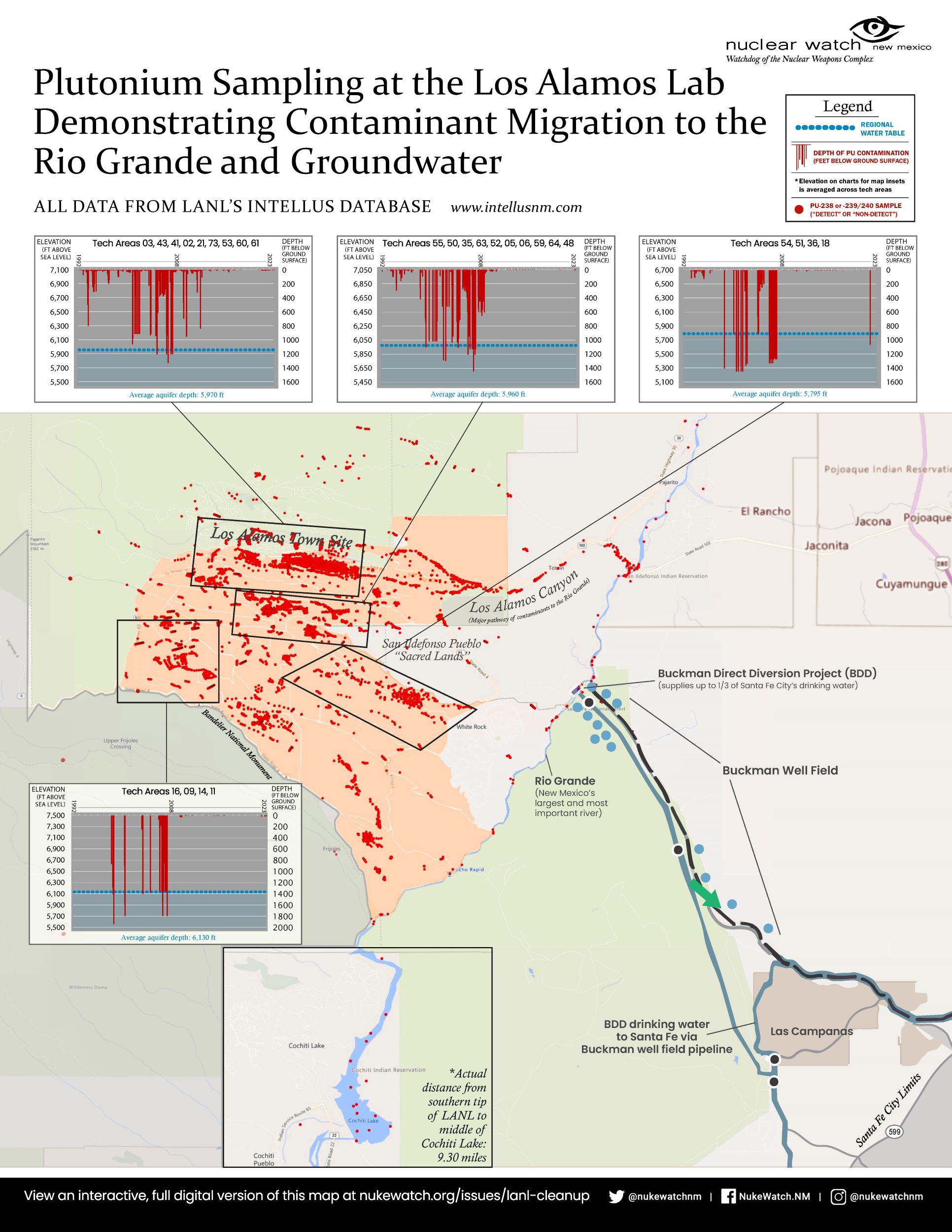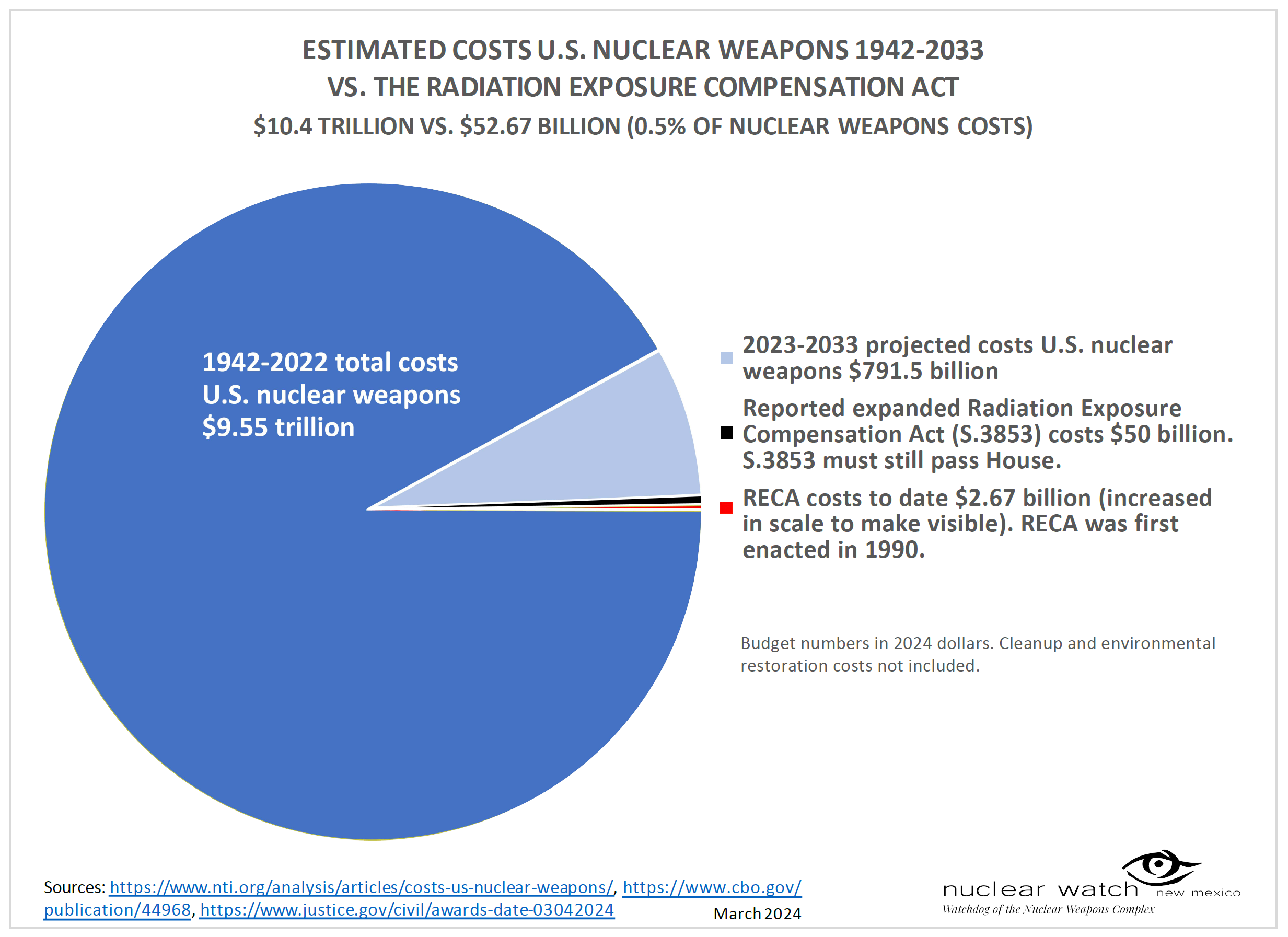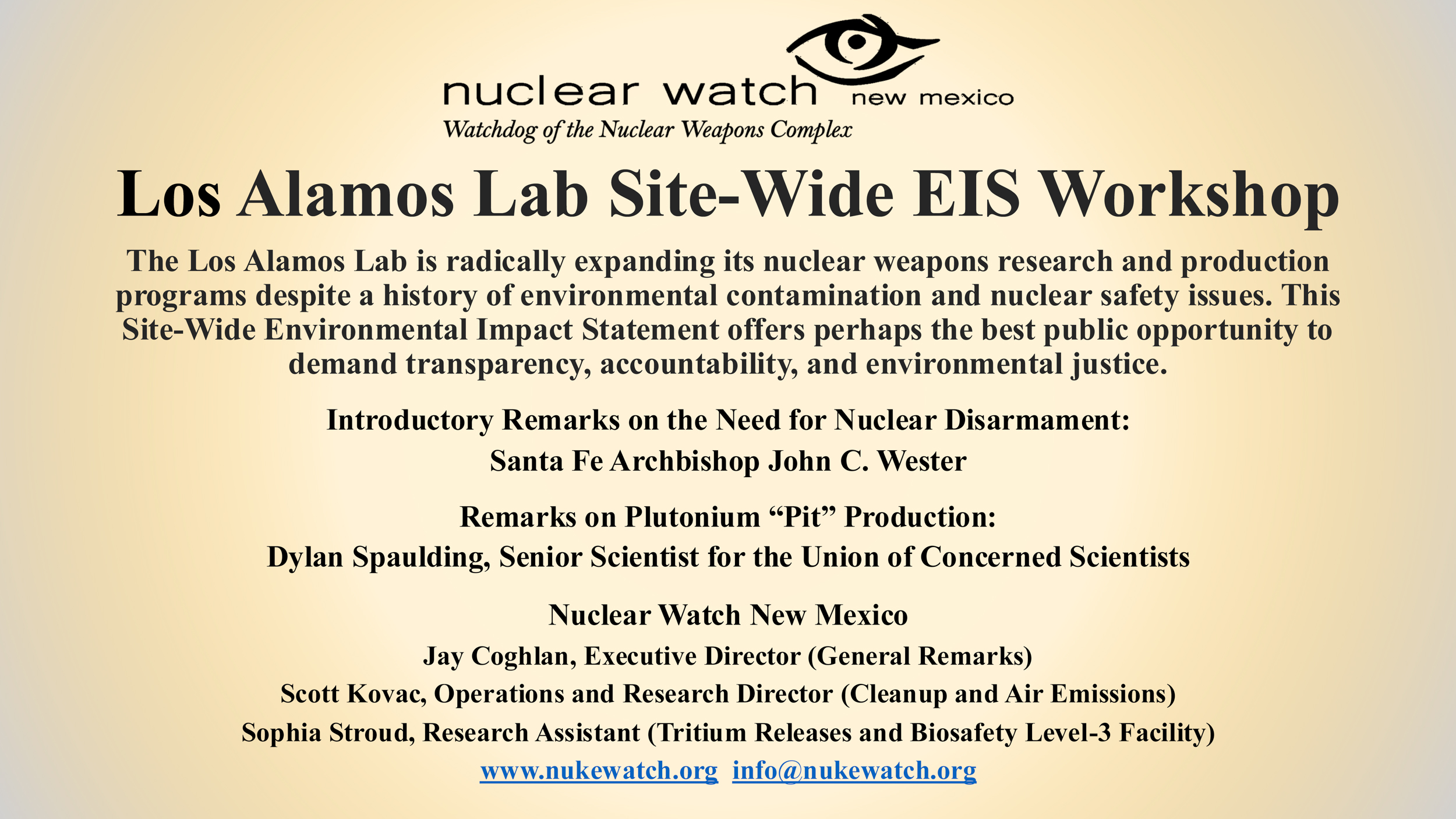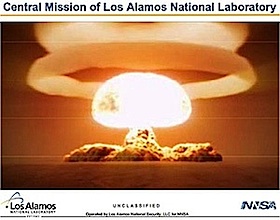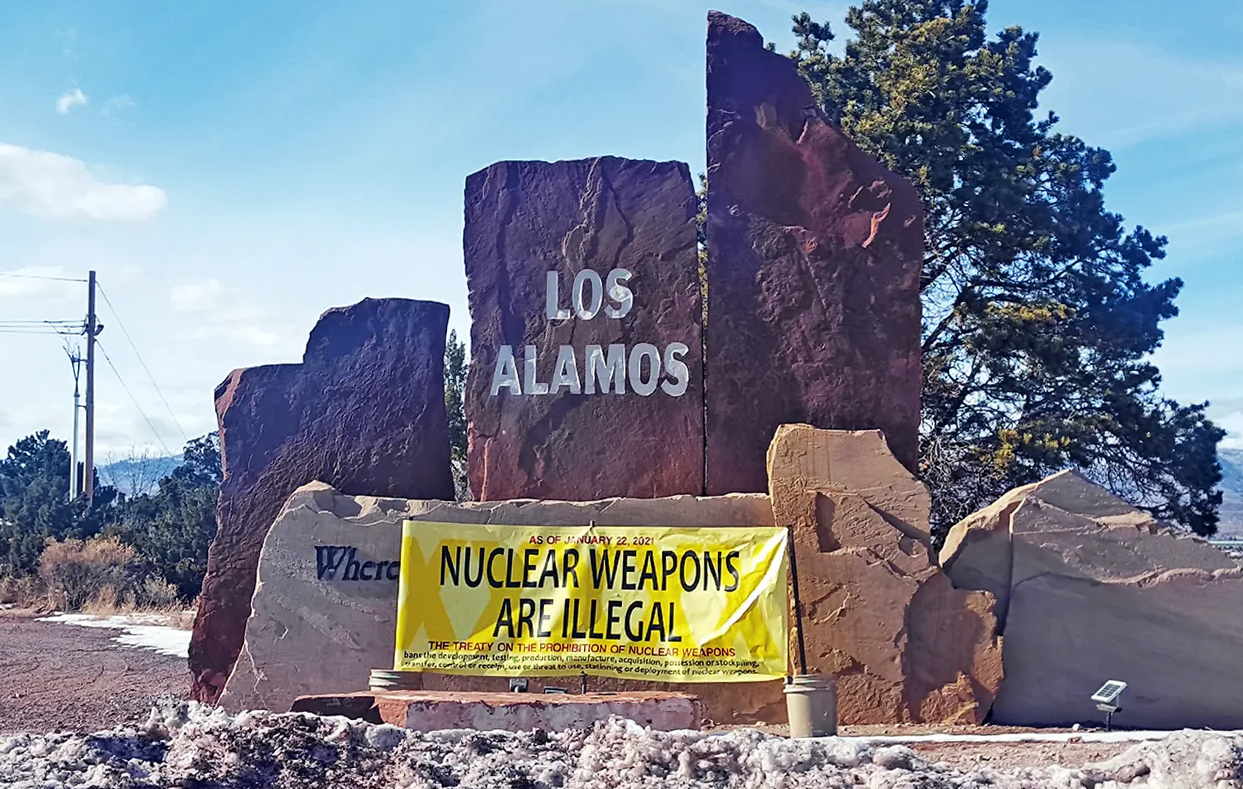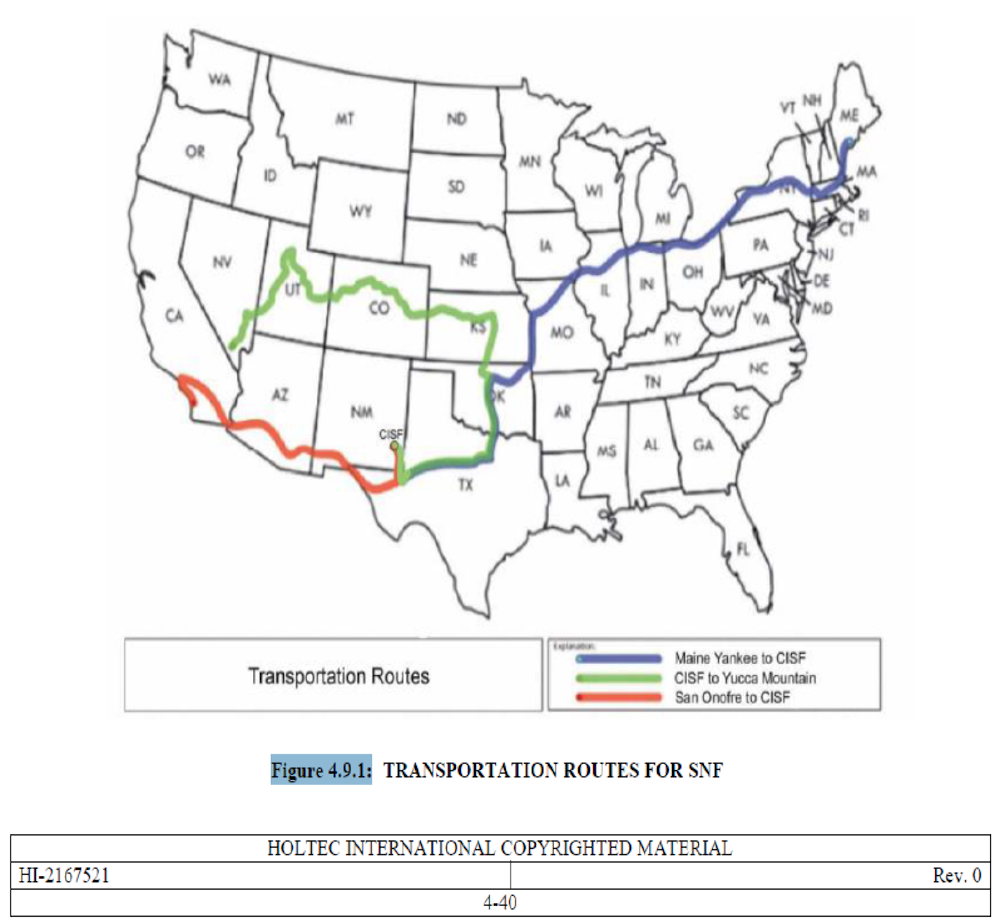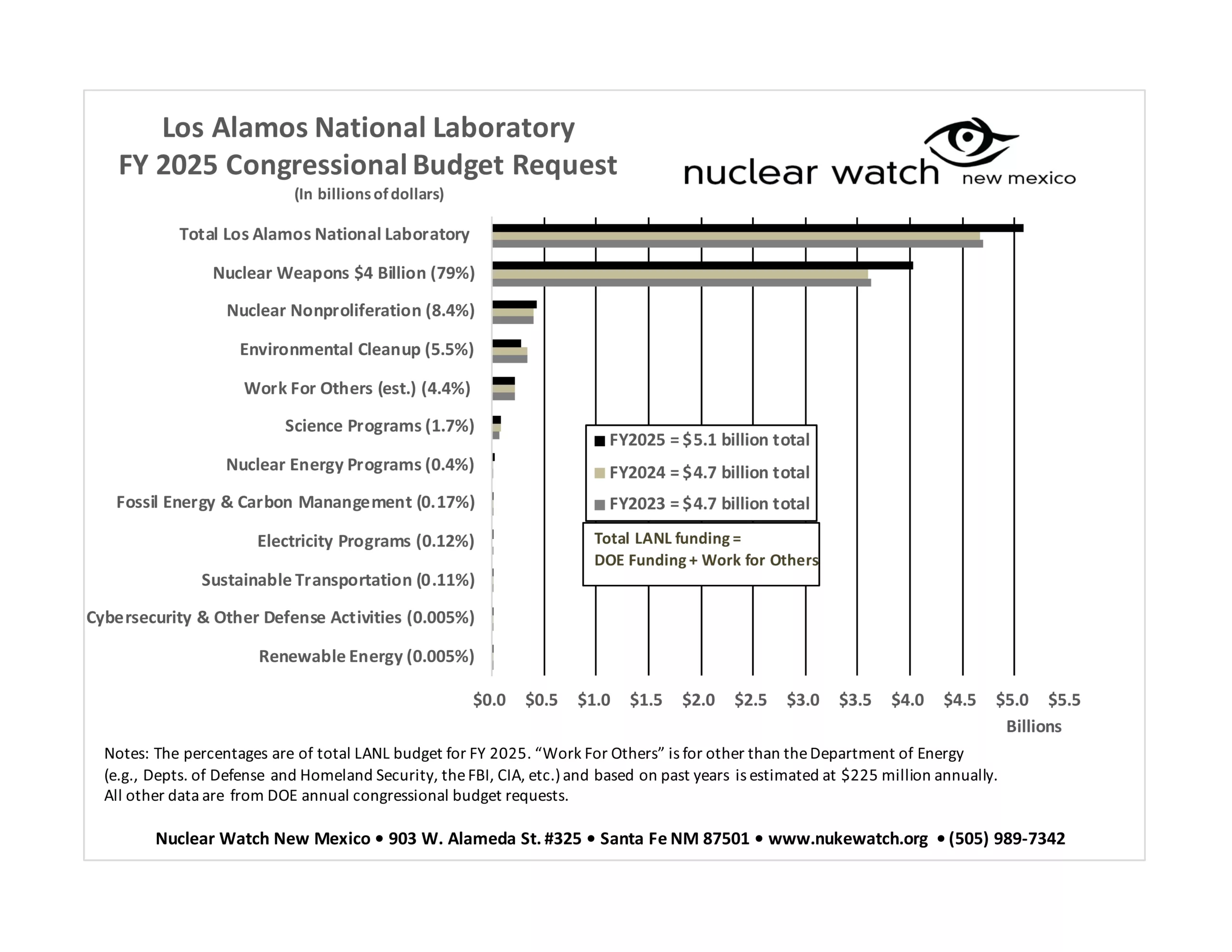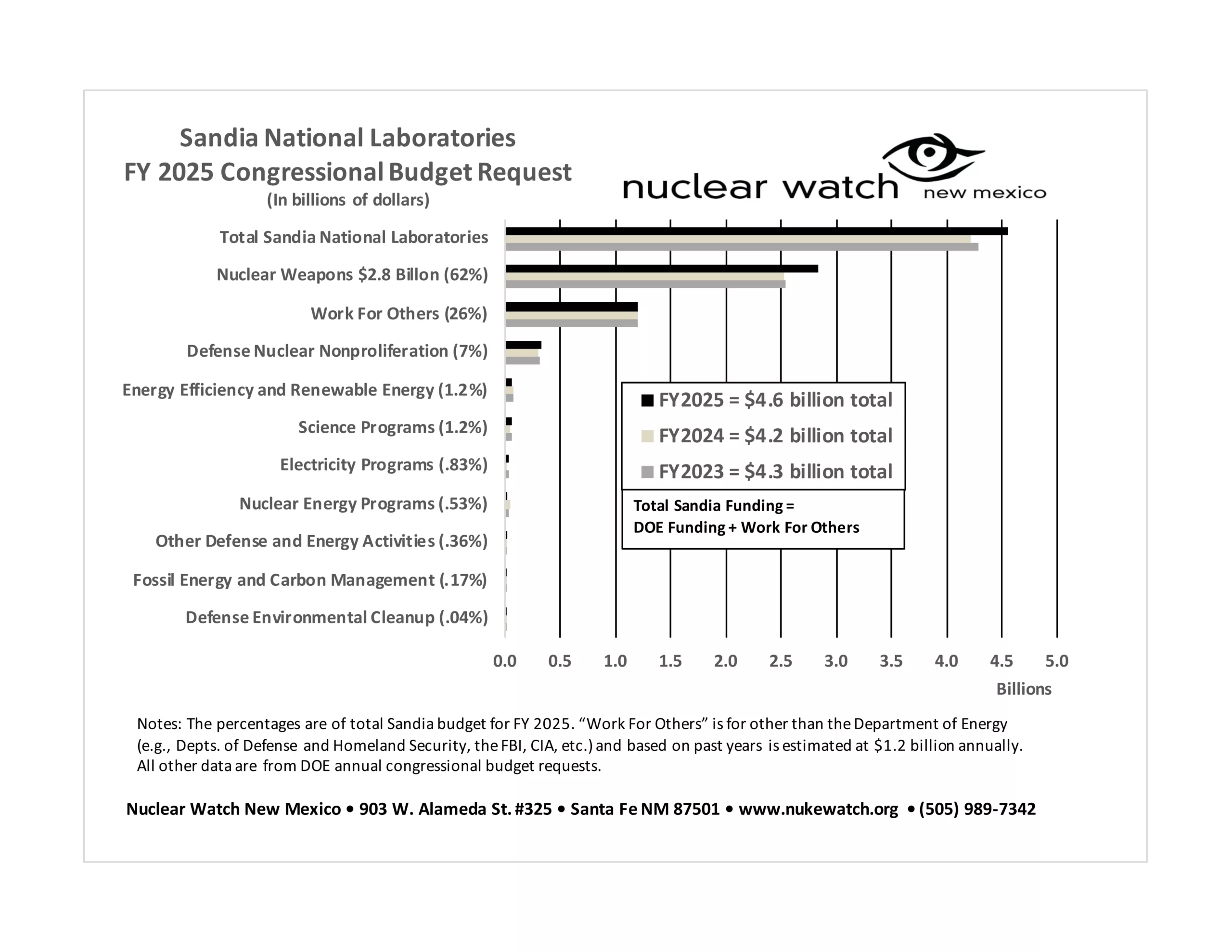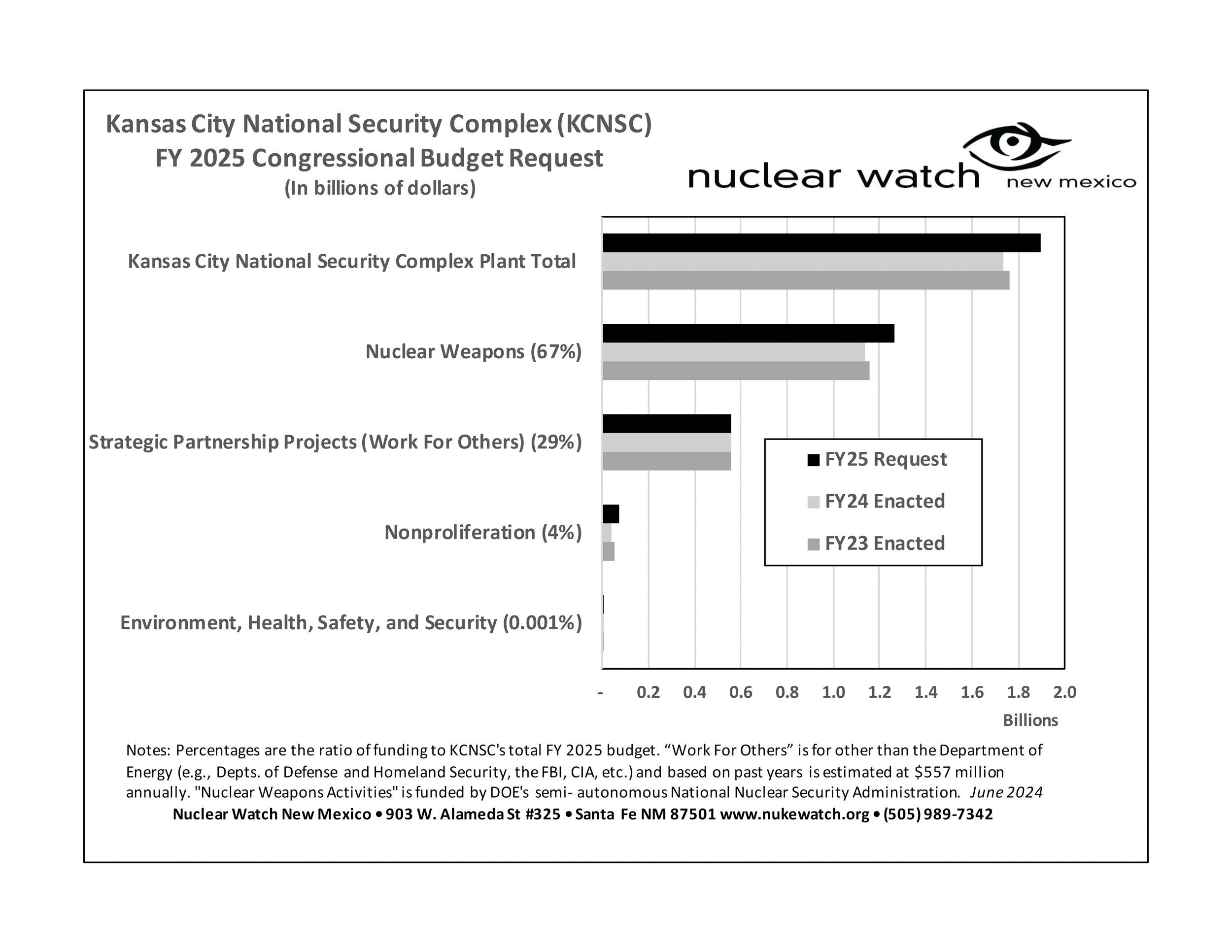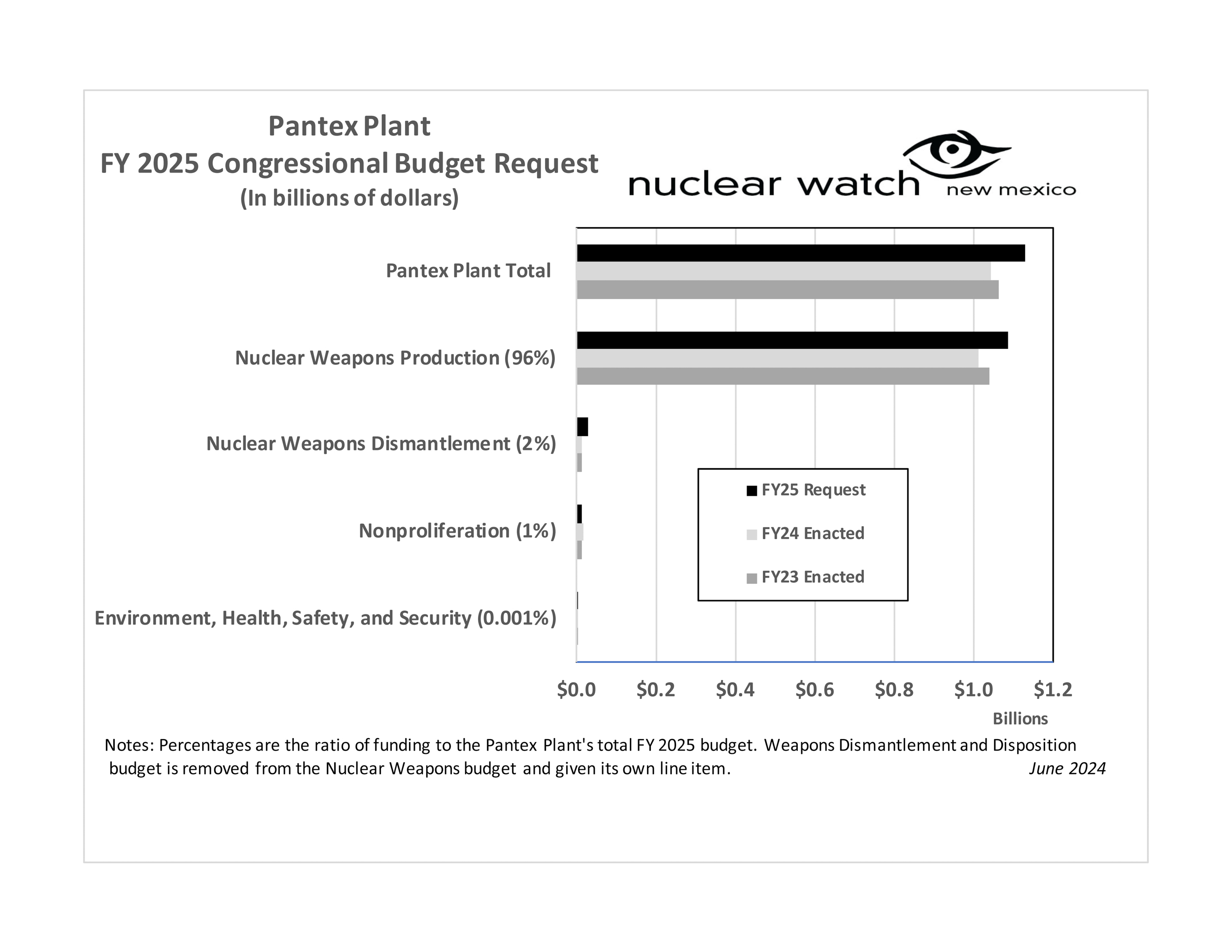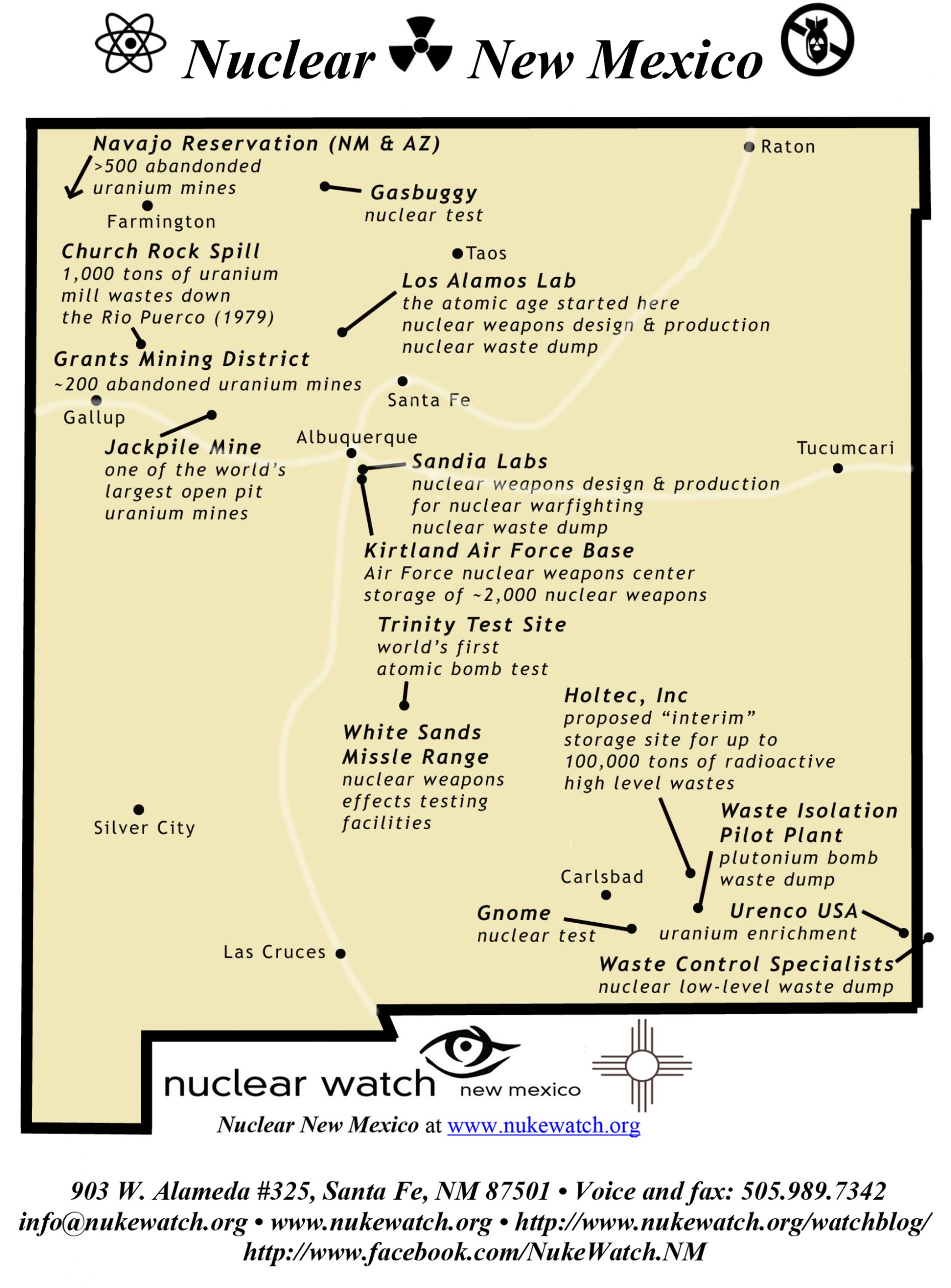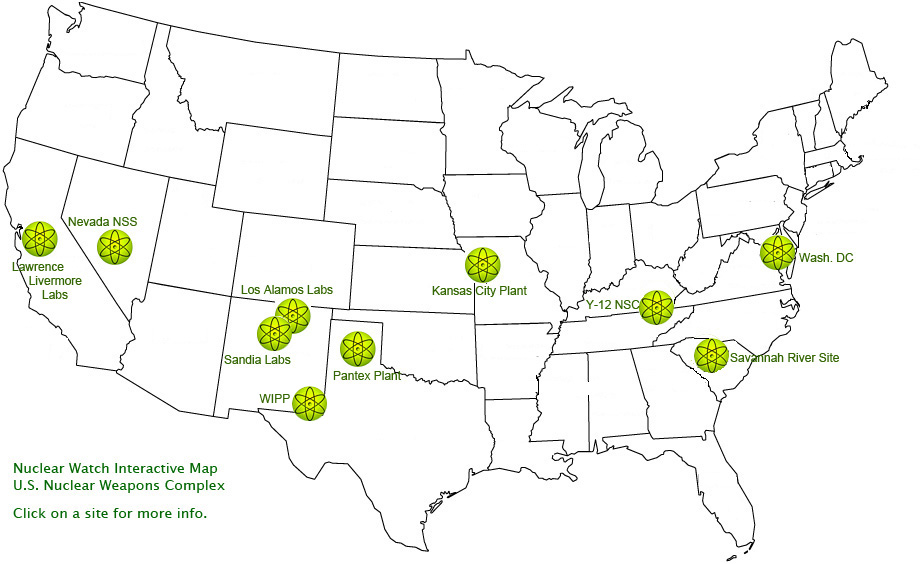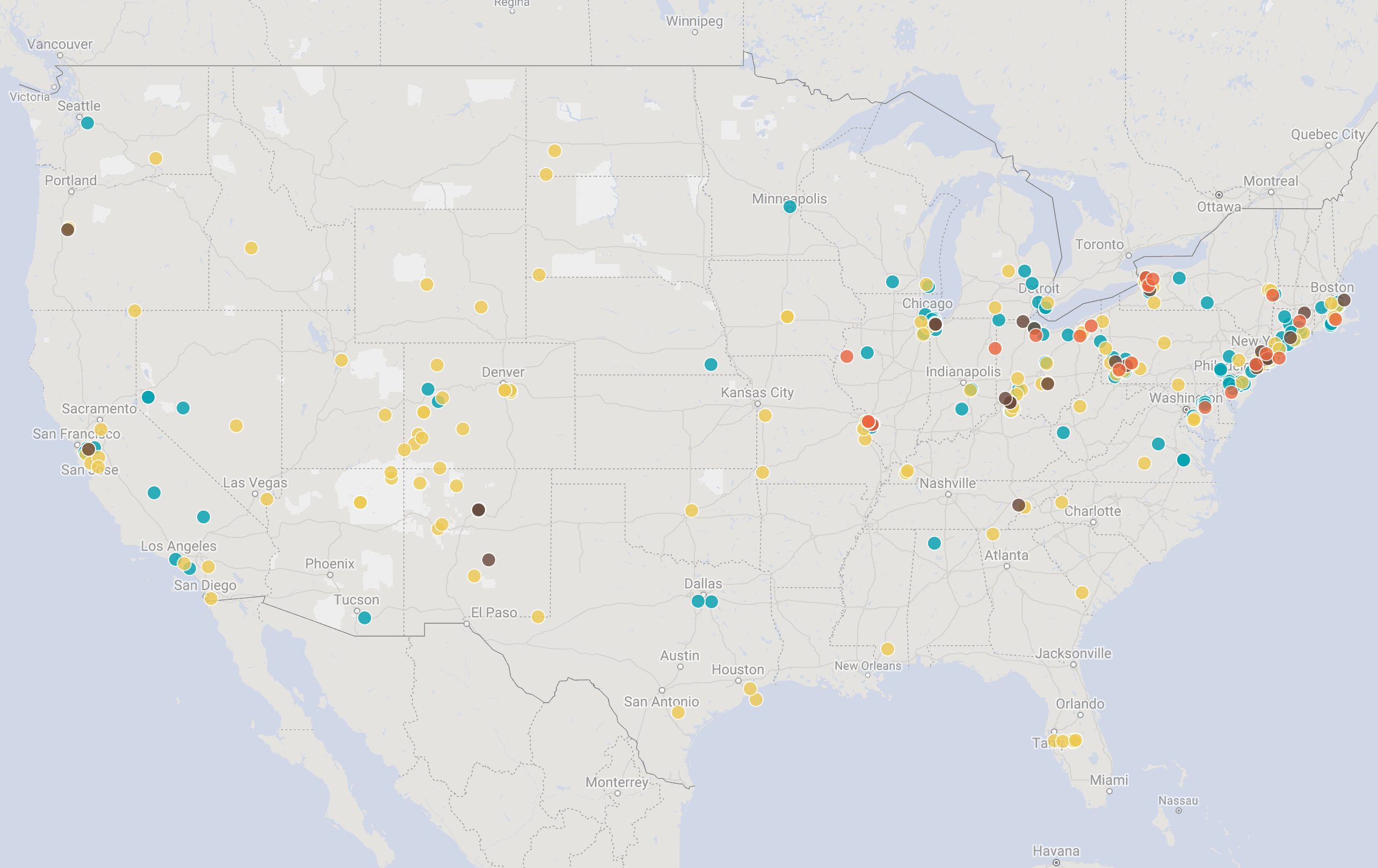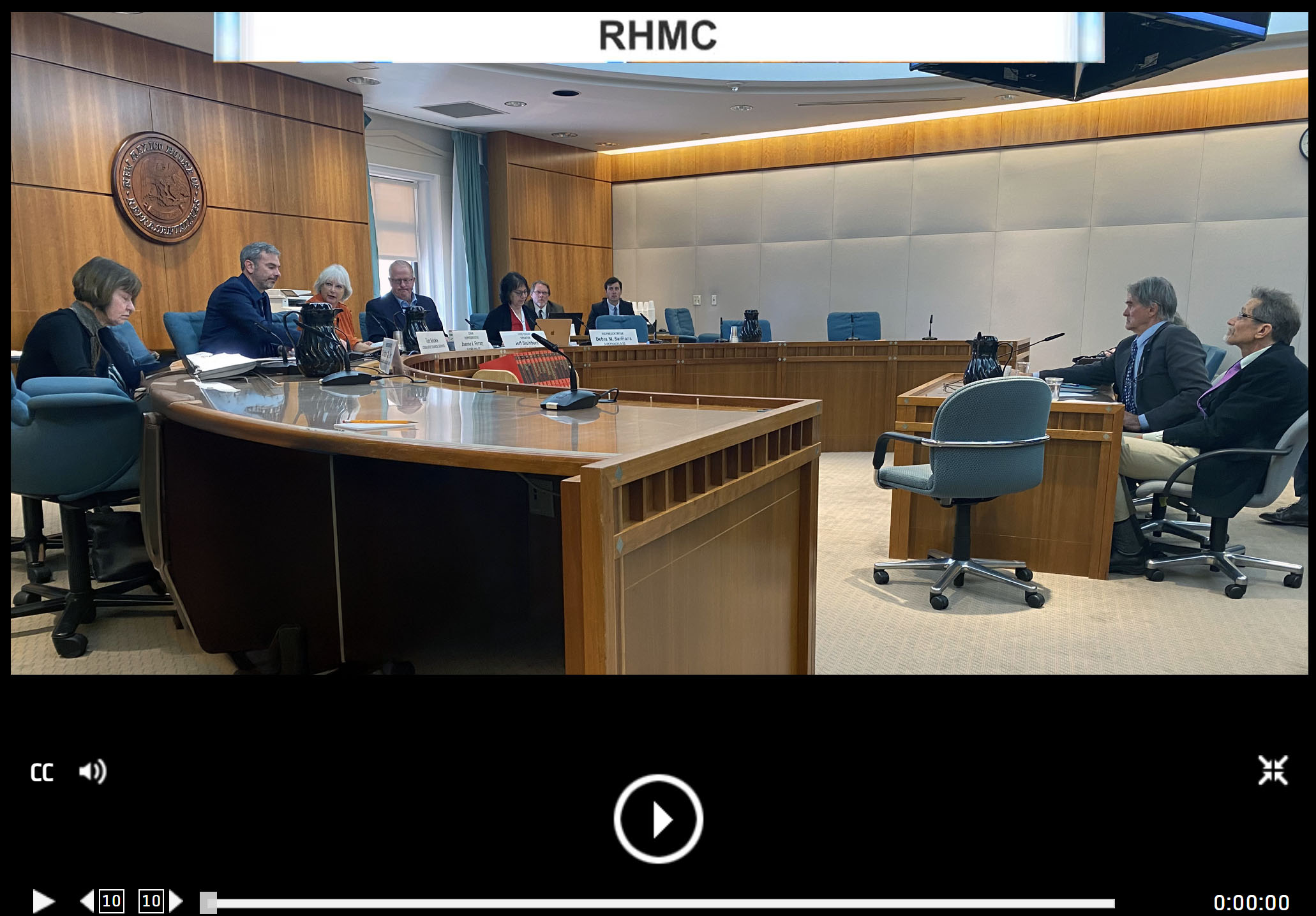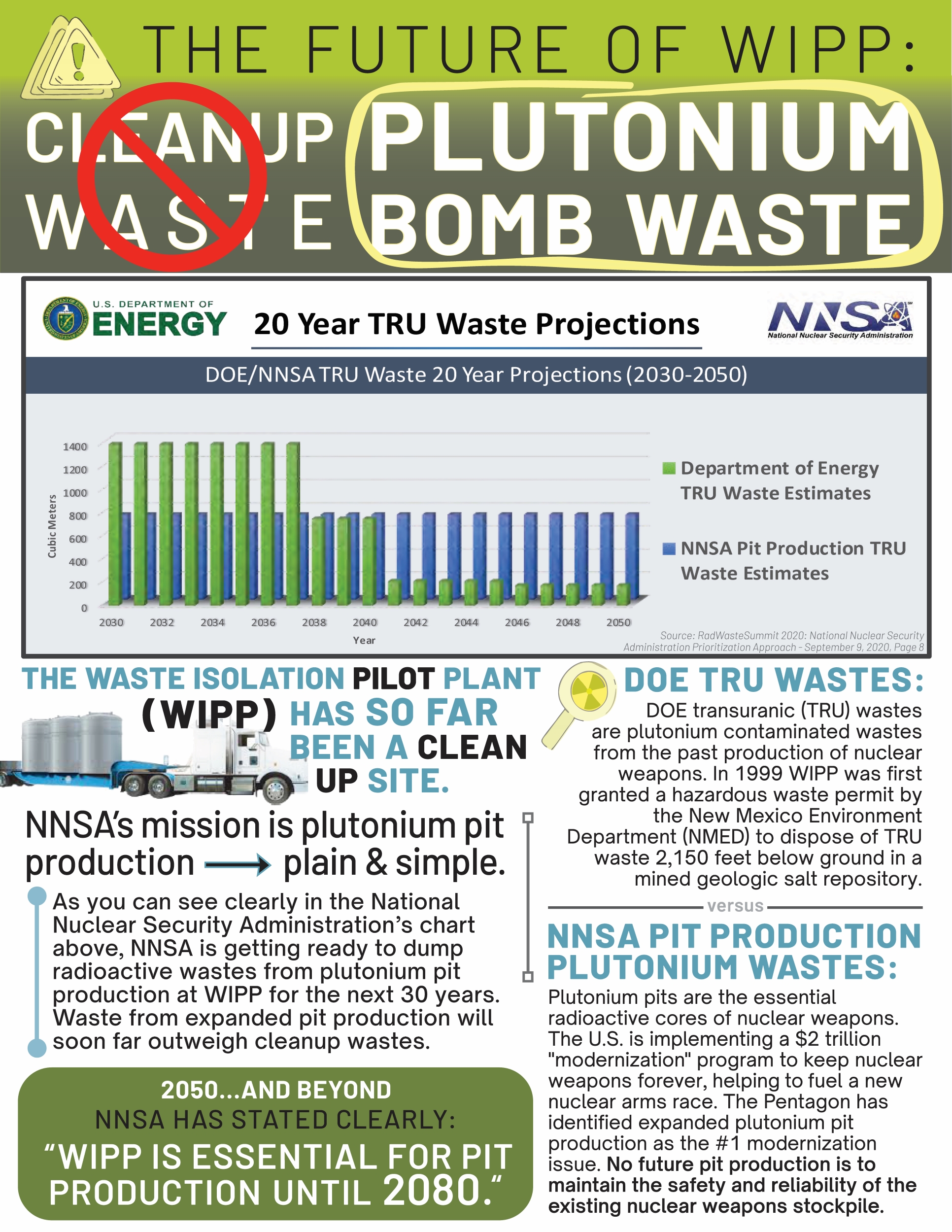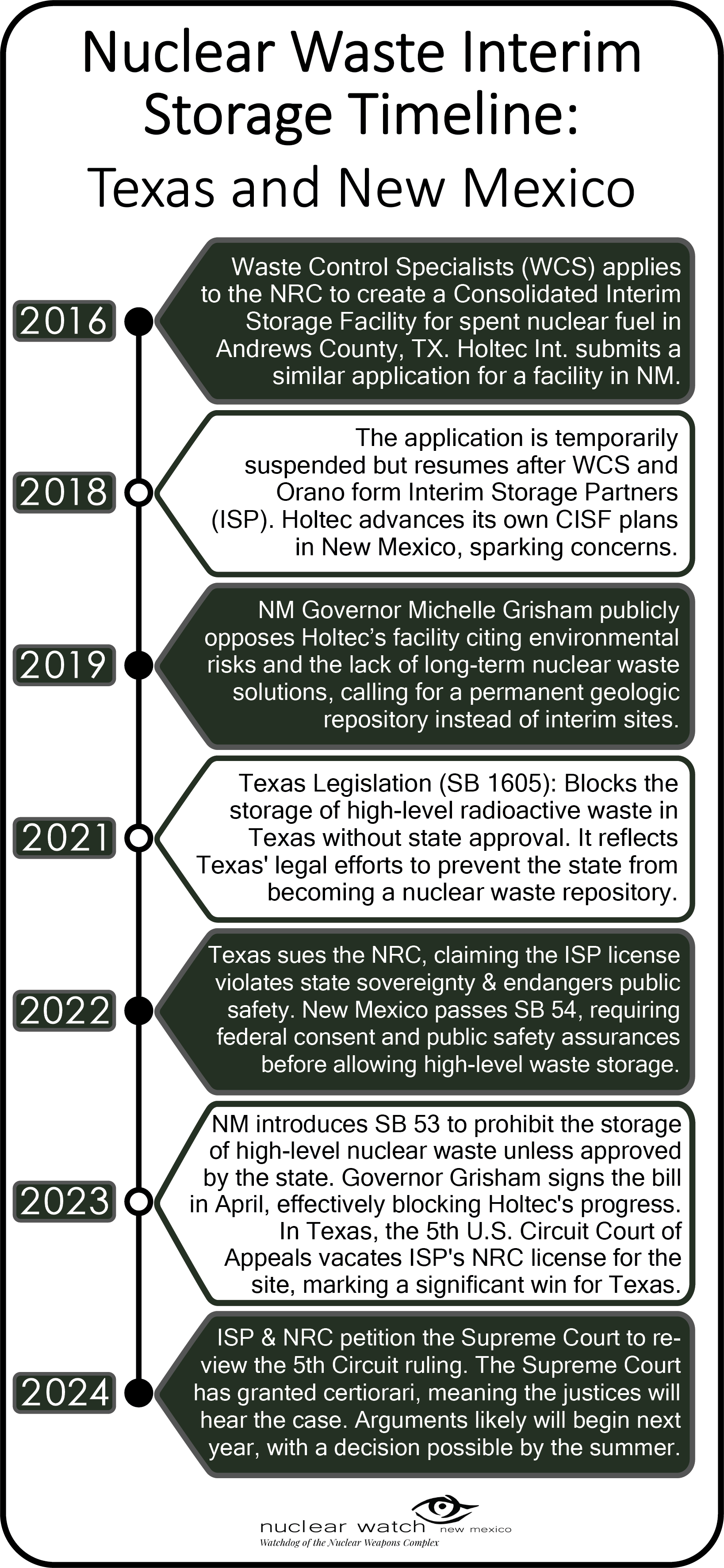QUOTE OF THE WEEK
Nothing Found
It seems we can’t find what you’re looking for. Perhaps searching can help.
LANL’s Central Mission: Los Alamos Lab officials have recently claimed that LANL has moved away from primarily nuclear weapons to “national security”, but what truly remains as the Labs central mission? Here’s the answer from one of its own documents:
LANL’s “Central Mission”- Presented at: RPI Nuclear Data 2011 Symposium for Criticality Safety and Reactor Applications (PDF) 4/27/11
Banner displaying “Nuclear Weapons Are Now Illegal” at the entrance in front of the Los Alamos National Lab to celebrate the Entry Into Force of the Nuclear Weapon Ban Treaty on January 22, 2021
Nothing Found
It seems we can’t find what you’re looking for. Perhaps searching can help.
Follow the Money!
Map of “Nuclear New Mexico”
In 1985, US President Ronald Reagan and Russian President Mikhail Gorbachev declared that “a nuclear war cannot be won and must never be fought.”
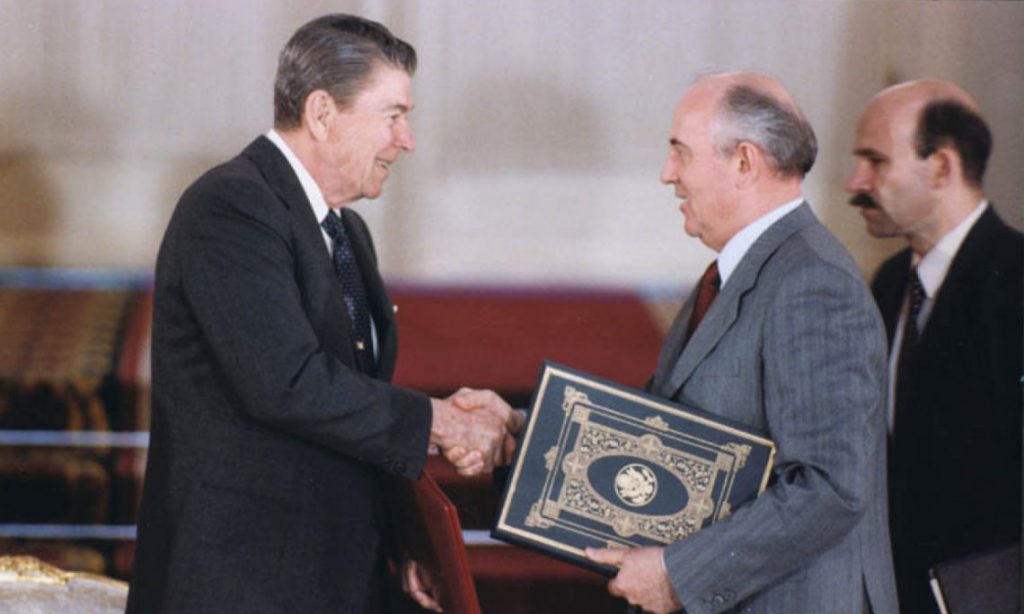
Waste Lands: America’s Forgotten Nuclear Legacy
The Wall St. Journal has compiled a searchable database of contaminated sites across the US. (view)
Related WSJ report: https://www.wsj.com
NEW & UPDATED
Lawsuit filed against owners of Seabrook nuclear plant over alleged project sabotage
““The hydropower supplied by NECEC would displace the sale of more expensive (and highly polluting) power generated from NextEra’s fossil fuel plants, as well as reduce the prices paid to NextEra for output at its nuclear plant,” the lawsuit says.”
Beyond Nuclear | December 2, 2024 nhpr.org
The energy company Avangrid is accusing NextEra Energy, owners of the Seabrook nuclear power plant, of sabotaging the development of a transmission line meant to bring Canadian hydropower onto the New England grid.
In a lawsuit filed last month, Avangrid alleges NextEra Energy tried to prevent the New England Clean Energy Connect from coming online to protect their profits, including by delaying an upgrade to the Seabrook nuclear power plant’s circuit breaker.
Nuclear Weapons Are Stored on Native Reservations in an Example of Nuclear Colonialism
Why many of America’s nuclear weapons are stored on Native land
Ella Weber | November 27, 2024 teenvogue.com
As we celebrate Thanksgiving and Native American Heritage Month, I’m reflecting on an often overlooked area where Native Americans are still harmed by our nation’s violent policies: the realm of nuclear weapons. As an undergrad and a researcher with Nuclear Princeton, I learned, for the first time, that there are 15 operational silos designed to host highly dangerous nuclear intercontinental ballistic missiles (ICBMs) on Fort Berthold Indian Reservation, home to my tribe: the Mandan, Hidatsa, and Arikara Nation. Their presence likely makes us a priority target for nuclear attack in a potential confrontation with an adversary nation — yet another consequence of the continued violence of American colonialism on our Indigenous peoples.
A pie we’re not thankful for
“You might need a magnifying glass to scrutinize the remaining slices, more accurately described as slivers. If your grandma served you up this meager portion at the Thanksgiving table you would have something to say about it. And yet, the majority of Americans swallow this disproportionate deprivation of essential services with nary a murmur.”
Beyond Nuclear | November 24, 2024 beyondnuclear.org

Obscene amounts are spent on US nuclear weapons, but hardly anything to help the people they harmed, writes Linda Pentz Gunter
It’s pie season in America with Thanksgiving fast approaching and pumpkins ready to be pureed into pulp and baked into a delicious confection topped with whipped cream.
But there are other kinds of pies, ones we savor far less happily and that leave a bitter taste in taxpayers’ mouths.
Let’s start with the military pie. Each year, the National Priorities Project (NPP) publishes a US discretionary budget pie for us to sample — sourced from the Office of Management and Budget — and it’s not a pretty sight.
Its most recent version — entitled Militarization of the federal budget in FY 2023 — delivers us a pie guaranteed to cause heartburn if not heartache. A hefty 62% of the pie is sliced off before we even begin to digest the rest, all of it going to militarism to the tune of $1.14 trillion.
Santa Fe New Mexican: Is Acid Canyon clean enough? Depends who you ask
“With the help of Nuclear Watch New Mexico, [Chemist and Northern Arizona University professor emeritus] Ketterer took samples of soil, water and plants from a few locations around Acid Canyon, which he then analyzed using mass spectrometry. He looked in particular at the proportions of two main isotopes, plutonium-239 and plutonium-240, in each sample, which he said can begin to answer questions about where and when the contamination originated.
Alaina Mencinger | November 24, 2024 santafenewmexican.com
Ex-Westinghouse VP sentenced to jail in $9 billion nuclear heist of SC ratepayers
“In both the SC and GA cases, the state governments helped pave the way for the financial mismanagement of the projects by legislating that state electric ratepayers be responsible to pay for the nuclear construction in their monthly bills many years ahead of receiving a single watt of utility services.”
Beyond Nuclear | November 21, 2024 beyondnuclear.org
On November 20, 2024, the ex-Westinghouse Electric Corporation Vice President, who once headed the company’s AP1000 advanced reactor global marketing division, Jeffrey Alan Benjamin was sentenced in the District of South Carolina Federal Court to one year and a day in prison and a $100,000 fine for his role to defraud the South Carolina Public Utility Commission (PUC) and state electric ratepayers out of billions of dollars following the 2017 abandonment of the V.C. Summer units 2 & 3 nuclear plant construction project.
The US Justice Department had originally charged Westinghouse’s senior global nuclear project manager with 16 federal felony counts including conspiracy to commit wire and mail fraud by withholding and providing false financial information to South Carolina regulators and state customers while the V.C. Summer AP1000 pressurized water reactor project was financially collapsing from skyrocketing cost overruns and mounting construction delays. After years of legal wrangling, Benjamin entered into a guilty plea deal to a single “information felony charge” for “aiding and abetting the failure to keep accurate corporate records.”
Arms Control Association: Putin’s Decision to Lower Threshold for Nuclear Use Is Irresponsible and Dangerous
“Because nuclear war would affect all people, Russia’s dangerous behavior demands a global response.”
Statement by Daryl G. Kimball, Executive Director, Arms Control Association | November 19, 2024 armscontrol.org
(Washington, D.C.) — As foreshadowed by an earlier statement by Russian President Vladimir Putin, the Kremlin issued a decree that revises Russian policies regarding the employment of nuclear weapons in war in a way that further blurs the threshold for Russian use of nuclear weapons and adds significant uncertainty to the already unsteady balance of nuclear terror between Russia and the United States and other members of the NATO alliance.
The new doctrine includes language that asserts that Russia “reserves the right” to use nuclear weapons to respond to a conventional-weapons attack that creates a “critical threat” to its “sovereignty and territorial integrity,” whereas the previous doctrine, which was issued in 2020, only reserves the right to use nuclear weapons if an attack on Russia threatens “the very existence of the state.”
Santa Fe New Mexican: Santa Fe County commissioners grill federal official over LANL legacy cleanup
Santa Fe County commissioners on Tuesday pressed an official from the Environmental Management Los Alamos Field Office on legacy waste cleanup, including the status of a toxic chromium plume under the area’s canyons.
By Cormac Dodd cdodd@sfnewmexican.com, Santa Fe New Mexican | November 13, 2024 santafenewmexican.com
The U.S Energy Department office is in charge of the cleanup of the legacy contamination of radioactive and chemical materials and waste resulting from operations during the Manhattan Project and the Cold War at Los Alamos National Laboratory. Jessica Kunkle, manager of the Los Alamos field office, briefed the commissioners in a presentation at the urging of Commissioner Anna Hansen.
At one point, Kunkle noted remediated land known as the “Middle DP Road Cleanup” site had been turned over to Los Alamos County for “continued economic development.” In January, the Department of Energy announced radiologically contaminated materials, including metal items, debris and glass, had been removed from the site, which is located in Los Alamos’ industrial district a little east of downtown.
‘Help us,’ UN nuclear watchdog chief tells Iran ahead of visit
– Grossi seeks more monitoring cooperation at nuclear sites
– Iran enriching uranium to 60%, close to bomb-grade
– IAEA board of governors to meet next week in Vienna
By Richard Valdmanis, Reuters | November 12, 2024 reuters.com
BAKU, Nov 12 (Reuters) – U.N. atomic watchdog chief Rafael Grossi appealed to Iran’s leadership on Tuesday to take steps to resolve longstanding issues with his agency a day before he arrives in the Iranian capital for crunch talks over its nuclear programme.
The International Atomic Energy Agency head has for months sought progress with Iran on issues including a push for more monitoring cooperation at nuclear sites and an explanation of uranium traces found at undeclared sites.
But little has come from Grossi’s efforts and with the return of President-elect Donald Trump, who is widely expected to restore a maximum-pressure policy on Iran, Grossi’s trip on Wednesday should provide indications of how Iran wants to proceed in the coming months.
“I am far from being able to tell the international community … what is happening. I would be in a very difficult position. So it’s like they (Iran) have to help us, to help them to a certain extent,” Grossi told Reuters on the sidelines of the COP29 climate summit in Baku.
Y-12 uranium facility delayed to 2030s, costs rise to $10B for national security priority
“The cost estimate changed last year, when the National Nuclear Security Administration submitted a budget request to Congress that revised the cost to between $8.5 billion and $8.95 billion and the completion date to 2029. In the same request, the agency said it would spend more than $200 million on ‘reprogramming to prevent further delays.'”
By Daniel Dassow, Knoxville News Sentinel | November 12, 2024 knoxnews.com
Workers at the Y-12 National Security Complex in Oak Ridge will have to wait several more years before moving uranium processing out of a crumbling Manhattan Project building to a new facility that will not be operational until 2031.
The Uranium Processing Facility, one of the largest construction projects in Tennessee history, will cost around $10.3 billion, and construction will not be complete until 2027, project manager Brian Zieroth said at a Knoxville business and tech conference on Oct. 30.
The National Nuclear Security Administration, the Department of Energy agency that owns Y-12, held for nearly a decade that the project would cost no more than $6.5 billion and would be finished by 2025.
DOE’s 2037 Deadlines for SRS: Realistic or Illusory?
The Department of Energy’s (DOE) Savannah River Site (SRS) has two major milestones to achieve by 2037. One is legally binding, the other is a commitment that remains negotiable.
By Don Moniak, The Aiken Chronicles | November 12, 2024 aikenchronicles.com
Surplus Weapons Plutonium
DOE is legally bound to removing 9.5 metric tons of surplus military plutonium to another state. While any state will do, the plan is to ship the plutonium in a diluted waste form to the underground transuranic waste dump in New Mexico known as the Waste Isolation Pilot Plant (WIPP).
This commitment is enshrined in the $600 million Settlement Agreement between the State of South Carolina and the federal government; more commonly known as “The Plutonium Settlement.”
Any failure of DOE/SRS to remove all or part of the 9.5 metric tons* of surplus plutonium (Pu) metals and powders will trigger new financial penalties that could be worth billions of dollars to South Carolina. The potential penalties involve two formulas.
First, the percentage of the 9.5 tons remaining on January 1, 2037 will be multiplied by $1.5 billion. Thus, five tons remaning could yield the state $7.5 billion, if the agreement is enforced.
Second, $1 million per day, but only up to $100 million per year, will be awarded to the State for any plutonium not removed after January 1, 2037; and for each year thereafter.
However, the loophole is that the agreement cannot be enforced until 2042 if DOE/SRS has removed more than half, or 4.75 MT, of surplus Pu by 2037.
The surplus Pu is currently being converted to a more stable waste form via a process called “dilute and dispose.” Plans to increase production through the development of a second glovebox processing line remain as tentative as the funding that is required—in this case upwards of $880 million.
ACTION ALERTS
Nothing Found
It seems we can’t find what you’re looking for. Perhaps searching can help.
CRITICAL EVENTS
Nothing Found
It seems we can’t find what you’re looking for. Perhaps searching can help.
Nothing Found
It seems we can’t find what you’re looking for. Perhaps searching can help.
New Nuclear Media: Art, Films, Books & More
Explosively Entertaining: Nuclear Weapons on TV
Books, Films & Art of Note | Beyond the Bomb: Maria Diaz-Islas, March
1. Jericho (2006-2008)
This show’s passionate fanbase fought tooth and nail to keep it running before CBS canceled it after only two seasons (sounds a lot like some nuclear weapons manufacturers I’ve heard of…). It follows the story of the fictional Kansas town, Jericho, after a nuclear attack on nearby Denver turns the characters’ worlds upside down. The citizens of Jericho struggle as they avoid nuclear fallout, determine how to communicate with the outside world, and try to restore life back to the way it was before the explosion. The post-apocalyptic plot is also riddled with drama, as the characters’ near-death experiences and the loss of loved ones force them to question whether they were truly happy with their former ways of life, reminiscent of living through the COVID-19 pandemic today.
Continue reading
BACK FROM THE BRINK: ENDING NUCLEAR WEAPONS BEFORE THEY END US
Opportunities Under the Biden Administration to Take Action
EVENT VIDEOS AND RESOURCES: Click below to view video recordings, learning resources and actions you can take to eliminate nuclear weapons and the threat of nuclear war.
preventnuclearwar.org/enw-resources
Former Nuclear Watch New Mexico Intern Alicia Sanders-Zakre Presentation on What the Entry into Force of the TPNW Mean in the United States:
Nothing Found
It seems we can’t find what you’re looking for. Perhaps searching can help.

